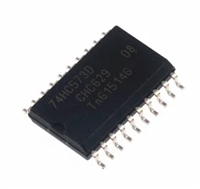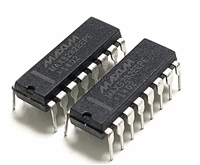Wear will generally manifest itself more significantly at edges of a surface. However, adhesive wear is often ob-
served over substantial areas of the tooling. It is important to note here that the wire crimper is the component
most susceptible to adhesive wear. Generally, adhesive wear will be directly related to load and to the amount of
relative movement between the two materials. Although the anvil may have equal loading, the amount of relative
movement between the terminal and tooling is many times more at the crimper than at the anvil. The insulation
crimper typically experiences lower adhesive wear because the load is reduced compared to the wire crimp and
the relative movement is less than that of the wire crimper, since there is no terminal and wire extrusion at the in-
sulation crimp.
Adhesive wear can be controlled in the selection of the material. Different alloys exhibit better or worse wear properties.
These properties can be measured and are well documented. Adhesive wear
is inversely proportional to the hardness of the material. Thus, the harder the material, the less adhesive wear. In crimp
tooling, there is often a tradeoff that is made. In order to achieve higher wear resistance, the material often exhibits
lower toughness by composition, hardness, or both. The final material selection is often based on years of experience.
One material may have high wear characteristics and lower toughness, and be suitable for a small terminal since the
margin of safety on stress is high. Another terminal may be large and the toughness could be of more importance due a
lower stress design margin. The ability to design and manufacture crimpers from several materials will enable optimal
material selection for a specific application.
The final property that affects adhesive wear is surface finish. As stated earlier, adhesion is highest at the peaks of the
surface. Thus, the smoother the finish, the less significant the peaks and the less significant the adhesion. Adhesive wear
can be reduced with a lower surface finish. Surface finish affects other crimping performance parameters. These are dis-
cussed in the next section.
Abrasion can occur depending on terminal surfaces. If a terminal is plated with an abrasive substance, the tooling
could suffer from abrasive wear. This would be an atypical condition
and would be handled by special design.
Other applications where abrasive wear is the primary wear mode involve terminals made of steel and stainless steel.
Extensive testing has shown chromium plating is the best surface treatment that can be used on crimpers designed for
these abrasive terminals. However, in these applications, crimpers will not last as long as those crimpers used to crimp
terminals made of other, less abrasive base materials. Using a lubricant (in those applications where this is acceptable)
has shown to increase the life of the crimper. However, even when lubricated the crimper life can be expected to be
shorter when crimping steel or stainless steel terminals.
Once abrasive wear has taken place to the point where the chromium plating has been removed from the base tool steel
of the crimper, as successive crimp cycles occur, further wear will happen very quickly. Without the protective
chromium plating, the underlying surface will then be subject to either further abrasive wear, or adhesive wear. For this
reason, care should be taken to replace the crimper as soon as wear is visible on the surface of the crimper.
Surface Condition
Surface condition can affect the performance of the crimp tooling as well as the longevity of service. As noted in
the previous section, a hard, smooth surface has improved adhesive wear properties and, thus, longer service life.
The other attribute that needs to be considered is friction.
Friction is a contributing factor in determining the final
crimp form and process characteristics. Low tooling friction
results in lower crimping force and thus can influence crimp
form as well as tooling life. Consistent frictional characteris-
tics between tooling sets will result in reduced process
variation.
Friction of the crimp tooling surfaces is influenced by fac-
tors similar to those that influence adhesive wear—hard-
ness and surface finish. Generally, harder materials exhibit
lower coefficients for sliding friction. Friction coefficients
have also been shown to be related to surface finish. Manu-
facturing processes need to produce consistent results
such that when tooling sets need to be changed in produc-
tion, minimum disruption in crimp quality is achieved. It has
been found that maintaining surface hardness above Rc 55 as
Typical Effect of Friction on Crimp Force
well as keeping surface finishes to 8 micro-inches or less is
desirable to obtain consistent crimp results and minimize
adhesive wear.






 深入解析AD7606高性能多通道模数转换器:资料手册参数分析
深入解析AD7606高性能多通道模数转换器:资料手册参数分析

 74HC573三态非易失锁存器(Latch)资料手册参数分析
74HC573三态非易失锁存器(Latch)资料手册参数分析

 MAX3232 RS-232电平转换器资料手册参数分析
MAX3232 RS-232电平转换器资料手册参数分析

 MAX485 RS-485/RS-422收发器资料手册参数分析
MAX485 RS-485/RS-422收发器资料手册参数分析
